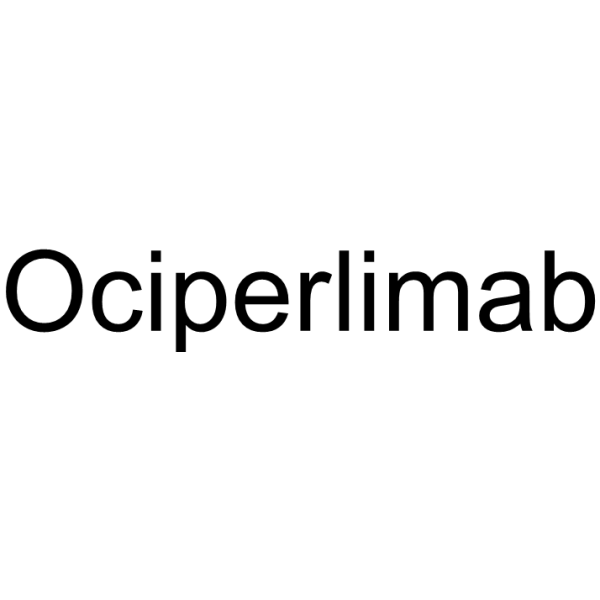Ociperlimab
Modify Date: 2024-08-04 11:04:13

Ociperlimab structure
|
Common Name | Ociperlimab | ||
|---|---|---|---|---|
| CAS Number | 2342597-93-5 | Molecular Weight | N/A | |
| Density | N/A | Boiling Point | N/A | |
| Molecular Formula | N/A | Melting Point | N/A | |
| MSDS | N/A | Flash Point | N/A | |
Use of OciperlimabOciperlimab is a humanized IgG1 anti-TIGIT antibody. Ociperlimab binds to the extracellular domain of human TIGIT with high affinity (KD = 0.135 nM). Ociperlimab blocks the interaction between TIGIT and its ligands PVR or PVR-L2. Ociperlimab can be used in research of cancer[1][2]. |
| Name | Ociperlimab |
|---|
| Description | Ociperlimab is a humanized IgG1 anti-TIGIT antibody. Ociperlimab binds to the extracellular domain of human TIGIT with high affinity (KD = 0.135 nM). Ociperlimab blocks the interaction between TIGIT and its ligands PVR or PVR-L2. Ociperlimab can be used in research of cancer[1][2]. |
|---|---|
| Related Catalog | |
| In Vitro | Ociperlimab (BGB-A1217; 0-10 μg/mL) 增强增强巨细胞病毒特异性 T 细胞分泌的 IFN-γ[1]。 Ociperlimab (1-1000 ng/mL) 以 Fc 依赖性方式激活自然杀伤细胞和单核细胞[1]。 Ociperlimab 在体外通过 Fc 依赖性内吞作用从 T 细胞表面去除 TIGIT[1]。 |
| In Vivo | Ociperlimab (BGB-A1217; 3 和 10 mg/kg; 腹腔注射; CT26 WT 荷瘤人源化 TIGIT 敲入小鼠和 MC38 荷瘤人源化 TIGIT 敲入小鼠) 以 Fc 依赖性方式产生抗肿瘤功效[1]。 Animal Model: CT26 WT tumor-bearing humanized TIGIT knock-in mice and MC38 tumor-bearing humanized TIGIT knock-in mice[1] Dosage: 3 and 10 mg/kg Administration: Intraperitoneal injection Result: Inhibited tumor growth compared to the single agent treatment groups. |
| References |
| No Any Chemical & Physical Properties |